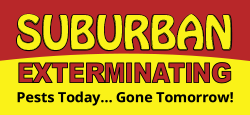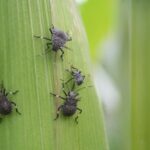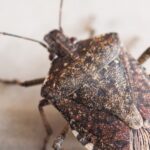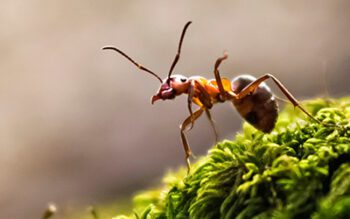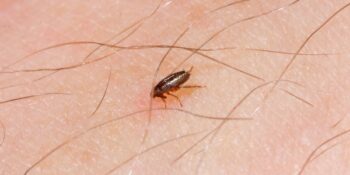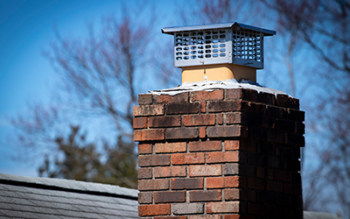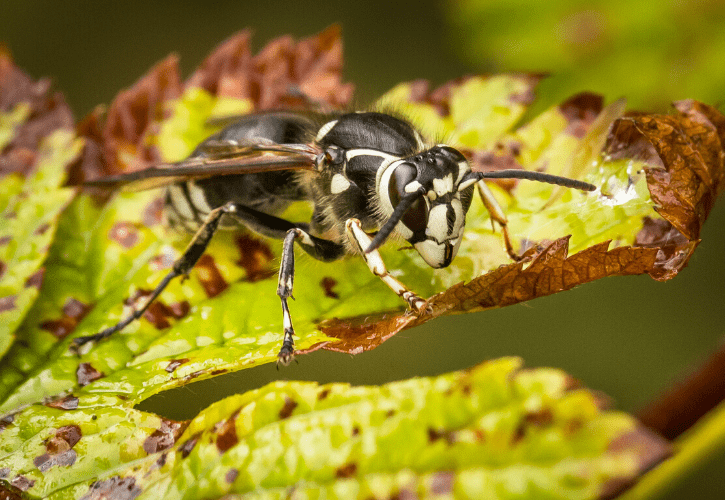
In Long Island, the distinctive presence of bald-faced hornets becomes increasingly noticeable, especially during the summer and early fall months. Despite their name, these formidable insects are more closely related to wasps than true hornets, sharing family ties with yellow jackets and paper wasps. Recognized for their black-and-white patterned faces, these buzzing inhabitants pose intriguing challenges for homeowners.
As your local pest control experts, we want you to stay informed. In this blog we’ll discuss three pivotal facts about bald-faced hornets, shedding light on their nesting behavior, defensive strategies, and the importance of professional intervention. Here’s what you need to know if you observe these insects in your surroundings.
1. How to Spot a Bald-Faced Hornet Nest
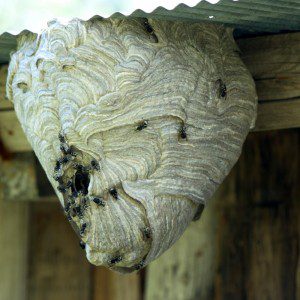
Bald-faced hornets do not build their nests in the ground like Digger Wasps and Cicada Killer Wasps do. Instead, you’ll always find the nests at least 3 feet above the ground in bushes, shrubs, fences, lights, and under the eaves of buildings. A bald-faced hornet’s nest is grey in color and can be over 2 feet long. For nests located near human activity, extreme caution is needed. A hornet colony consists of a queen and many workers, and a single bald-faced hornet’s nest may contain over 400 workers!
Each winter, only the queens survive in protected places like rock piles, hollow trees, under bark, and in the walls and attics of buildings. The queen builds a new nest every spring.
2. Bald-Faced Hornets Sting and Continue to Attack!
Whatever you do, do not disturb a bald-faced hornet’s nest! Bald-faced hornets are very protective of their hives. Animals or humans can be attacked by a large number of aggressive wasps. Unlike some other stinging insects which can only sting once, bald-faced hornets can sting multiple times because their stingers are not barbed. A Bald-Faced Hornet’s sting is painful because it contains venom. The venom injected by the stinger can make the stings hurt, itch, and swell for about 24 hours.
3. Bald-Faced Hornet Removal is Not a DIY Job.
Because of their aggression, it’s never recommended that you try to remove or relocate a bald-faced hornet nest on your own. Attempting to remove the nest on your own may aggravate the colony and provoke the hornets to sting.
If you notice a nest on your Long Island property, seek professional help from Suburban Exterminating as soon as possible to protect you, your family, and your pets from potential stings and/or the serious allergic reactions that could result. We offer a comprehensive list of residential and commercial pest control services.
What Do Bald-Faced Hornets Look Like?
Bald-faced hornets are one of the largest species of stinging insects we deal with on Long Island. As mentioned, they may have “hornet” in their name, but these pests are much more closely related to yellow jackets and paper wasps. Worker bald-faced hornets grow to be anywhere from ½ inch to ⅝ inch long; this size is even larger for queen bald-faced hornets, which can grow to be as large as ¾ inch in length. Bald-faced hornets have thin bodies like wasps which are black with an off-white pattern on their faces, which is the reason why they are referred to as “bald-faced.”
Where Do Bald-Faced Hornets Live?
It’s likely you may encounter bald-faced hornets in your own yard this summer. Typically they’ll build paper nests that are three or more feet off of the ground, inside trees, bushes, houses, sheds, or other structures. These nests can be over a foot in diameter and more than 2 feet in length.
You’re most likely to see bald-faced hornets during the daytime during the late summer season when population numbers are at their highest.
Dealing With Bald-Faced Hornets? Call Us!
Suburban Exterminating has been serving Long Island for generations and can help your family too. Our Pest Protection Plan provides you with many ways to help successfully control Bald-Faced Hornets on your property like customized service appointments, regularly scheduled preventative services, and inspections by our professionally trained and licensed technicians.
Contact Suburban Exterminating today to protect your home and family from bald-faced hornets!
